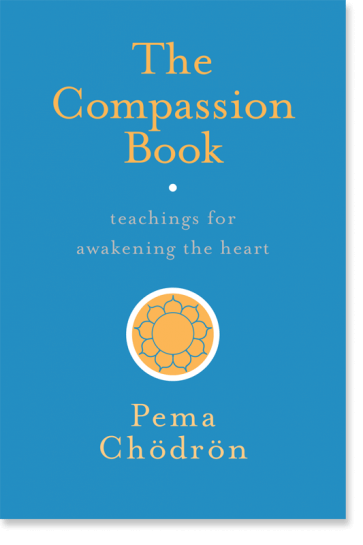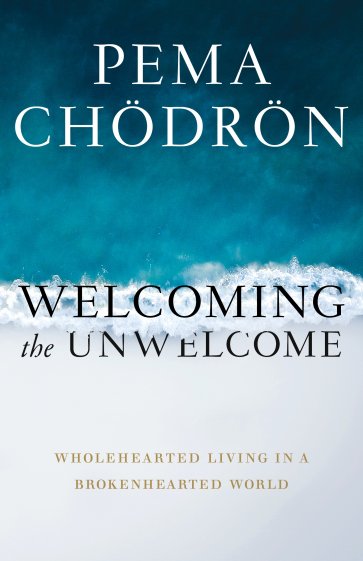

There is so much good in the worst of us, and so much bad in the best of us,it doesn’t behoove any of us to speak evil of the rest of us.
By
Edgar Cayce

Edgar Cayce (1877–1945) was an American clairvoyant and “father of holistic medicine.” More commonly known as “the sleeping prophet,” Cayce believed strongly in tapping into a timeless subconscious mind through dreams.
YOU MIGHT ALSO LIKE
CLEAR ALL
BY TEACHER
BY TYPE
FILTER

TOPIC
- Self-Development (23)
- Willpower (22)
- Buddhism (20)
- Building Character (19)
- Goal Setting (19)
- Mindfulness (19)
- Compassion Meditation (17)
- Habit Formation (16)
- Meditation (16)
- Self-Discovery (16)
- Kindness (15)
- Self-Reflection Practices (15)
- Focus (14)
- Neuroscience (14)
- Transformation (13)
- Awareness (12)
- Lovingkindness (12)
- Psychology (11)
- Suffering (11)
- Habits of Mind (10)
- Happiness (10)
- Self-Actualization (10)
- Honoring Emotion (9)
- Inner Life (9)
- Leadership (9)
- Motivation (9)
- Values (9)
- Emotional Intelligence (EQ) (8)
- Human Potential (8)
- Love (8)
- Mindfulness Practices (8)
- Tibetan Buddhism (8)
- Well-Being (8)
- Inner Peace (7)
- Intention (7)
- Mind-Body Connection (7)
- Resilience (7)
- Self-Acceptance (7)
- Self-Care (7)
- Spiritual Life (7)
- Activism/Service (6)
- Anger (6)
- Athlete Well-Being (6)
- Breathwork (6)
- Community Healing (6)
- Emotional and Mental Health (6)
- Empowerment (6)
- Forgiveness (6)
- Generosity (6)
- Inner Strengths (6)
- Offering Support to Others (6)
- Self-Healing (6)
- Self-Limiting Beliefs (6)
- Self-Love (6)
- Shame (6)
- Vulnerability (6)
- Anger Management (5)
- Anxiety (5)
- Cognitive Behavioral Therapy (5)
- Enlightenment (5)
- Fellowship and Community (5)
- Finding Meaning (5)
- Grit (5)
- Integrity (5)
- Interdependence (5)
- Joy (5)
- Letting Go (5)
- Physical Health (5)
- Relationship Challenges (5)
- Self-Reckoning (5)
- Soul Mission (5)
- Trust (5)
- Acceptance (4)
- Authenticity (4)
- Cognitive Psychology (4)
- Conscience (4)
- Entrepreneurship (4)
- Fear (4)
- Gratitude (4)
- Healthy Eating (4)
- Identity (4)
- Lovingkindness Meditation (4)
- Moral Philosophy (4)
- Negative Self-Talk (4)
- Parenting (4)
- Peak Performance (4)
- Presence (4)
- Self-Worth (4)
- Social Responsibility (4)
- Spiritual Development (4)
- Spiritual Growth (4)
- Stoicism (4)
- Stress Management (4)
- Work-Life Balance (4)
- Addiction (3)
- BIPOC Well-Being (3)
- Compassion Fatigue (3)
- Competition (3)
- Consciousness (3)
- Courage (3)
- Death and Dying (3)
- Depression (3)
- Dharma (3)
- Diet and Nutrition (3)
- Exercise (3)
- Female Empowerment (3)
- Humility (3)
- Karma (3)
- Longevity (3)
- Personal Development (3)
- Positive Psychology (3)
- Positive Self-Talk (3)
- Productivity (3)
- Relationship with Time (3)
- Science and Spirituality (3)
- Search for Purpose (3)
- Self-Discipline (3)
- Self-Realization (3)
- Sleep (3)
- Spiritual Healing (3)
- Spiritual Practices (3)
- Addiction Recovery (2)
- Belonging (2)
- Body Scan Meditation (2)
- Brain Health (2)
- Caregiver Well-Being (2)
- Communication Skills (2)
- Confidence (2)
- Creative Well-Being (2)
- Decision Making (2)
- Energy Healing (2)
- Epigenetics (2)
- Facing Own Death (2)
- Freedom (2)
- Grief (2)
- Guilt (2)
- Imagination and Creativity (2)
- Indigenous Well-Being (2)
- Jealousy/Envy (2)
- Life Challenges (2)
- Mindfulness Meditation (2)
- Neuroplasticity (2)
- Passion (2)
- Patience (2)
- Quantum Physics (2)
- Romantic Relationships (2)
- Self-Reliance (2)
- Setting Limits and Boundaries (2)
- Shadow (2)
- Spiritual Direction (2)
- Spiritual Fasting (2)
- Stress (2)
- The Divine (2)
- Trauma Healing (2)
- Visualization (2)
- Work Relationships (2)
- Zen Buddhism (2)
- Abandonment (1)
- Access to Education (1)
- ADD/ADHD (1)
- Affirmations (1)
- Aging (1)
- Animal Connection (1)
- Awe (1)
- Black Well-Being (1)
- Burnout (1)
- Child’s ADD/ADHD (1)
- Christian Mysticism (1)
- Christianity (1)
- Collaboration (1)
- Connection (1)
- Connection with Nature (1)
- Criticism and Rejection (1)
- Cross-Cultural Dynamics (1)
- Curiosity (1)
- Digital Life (1)
- Disconnection (1)
- Drug Addiction (1)
- Dysfunctional Childhood (1)
- Ecospirituality (1)
- Embodiment (1)
- Energy Balancing (1)
- Environmental Justice (1)
- Failure (1)
- Faith Healing (1)
- Fasting for Health (1)
- Fate (1)
- Feminism (1)
- Friendship (1)
- Gender Challenges (1)
- Global Challenges (1)
- God (1)
- Growth Mindset (1)
- Guided Meditation (1)
- Handling a Loved One’s Illness (1)
- Healing Touch (1)
- Higher Calling (1)
- Hope (1)
- Hospice (1)
- Inner Child (1)
- Intimacy (1)
- Jungian Analysis (1)
- Kids and Sports (1)
- Learning Styles (1)
- Life Force Energy (1)
- Living as an Empath (1)
- Living with Illness (1)
- Loneliness (1)
- Manifestation (1)
- Masculine/Feminine Dynamics (1)
- Native American Beliefs (1)
- Non-Duality (1)
- Othering (1)
- Perception (1)
- Personality Typing (1)
- Play (1)
- Positive Thinking (1)
- Post-Traumatic Growth (1)
- Psychedelic Journey (1)
- Relationship with Money (1)
- Ritual (1)
- Sacred Feminine (1)
- Sex (1)
- Sexual Assault or Abuse (1)
- Sexual Health (1)
- Sleep Disorders (1)
- Smoking Addiction (1)
- Social Justice (1)
- Speaking Your Truth (1)
- Spiritual Awakening (1)
- Spiritual Quest (1)
- Spirituality and Health (1)
- Storytelling (1)
- Sufism (1)
- Sustainability (1)
- Sutras (1)
- Unconscious Bias (1)
- Weight Concerns (1)
- Women’s Rights (1)
- Women’s Well-Being (1)
- Work Ethic (1)
- Young Adult Well-Being (1)
FILTER

TEACHER
- James Doty (5)
- Pema Chödrön (5)
- Daniel Goleman (4)
- Joan Halifax (4)
- Tara Brach (4)
- don Miguel Ruiz (3)
- Gaylon Ferguson (3)
- Scott Shute (3)
- Debbie Ford (2)
- don Jose Ruiz (2)
- Eckhart Tolle (2)
- Emiliana Simon-Thomas (2)
- Ethan Nichtern (2)
- Gretchen Rubin (2)
- Jay Shetty (2)
- Lorin Roche (2)
- Marcus Aurelius (2)
- Mark Manson (2)
- Matthieu Ricard (2)
- Sharon Salzberg (2)
- Tony Robbins (2)
- Wim Hof (2)
- Amishi Jha (1)
- Amy Morin (1)
- Angela Duckworth (1)
- BJ Miller (1)
- Brendon Burchard (1)
- Brené Brown (1)
- Brian Tracy (1)
- Bruce Lipton (1)
- Camille Helminski (1)
- Chip Conley (1)
- Chögyam Trungpa (1)
- Cynthia Bourgeault (1)
- Daniel Amen (1)
- Dorothy Day (1)
- Epictetus (1)
- Gabrielle Bernstein (1)
- Gary Zukav (1)
- Helen Weng (1)
- J. Krishnamurti (1)
- Jack Kornfield (1)
- Jacqueline Carter (1)
- James Hillman (1)
- James Hollis (1)
- Joseph M. Marshall III (1)
- Judith Orloff (1)
- Judson Brewer (1)
- Karen Armstrong (1)
- Kelly McGonigal (1)
- Krista Tippett (1)
- Kristin Neff (1)
- Lama Surya Das (1)
- Lodro Rinzler (1)
- Lynne McTaggart (1)
- Martha Beck (1)
- Martin Seligman (1)
- Matt Kahn (1)
- Matthew Fox (1)
- Mel Robbins (1)
- Michael Pollan (1)
- Noah Elkrief (1)
- Norman Fischer (1)
- Ondrea Levine (1)
- Piero Ferrucci (1)
- Ramani Durvasula (1)
- Rebecca Solnit (1)
- Richard Davidson (1)
- Robert Augustus Masters (1)
- Robert Sapolsky (1)
- Robert Thurman (1)
- Roxanne Dault (1)
- Stephen Levine (1)
- Sue Morter (1)
- Sylvia Boorstein (1)
- Thich Nhat Hanh (1)
- Toni Bernhard (1)
- V (1)
- Yongey Mingyur Rinpoche (1)
- Yung Pueblo (1)










